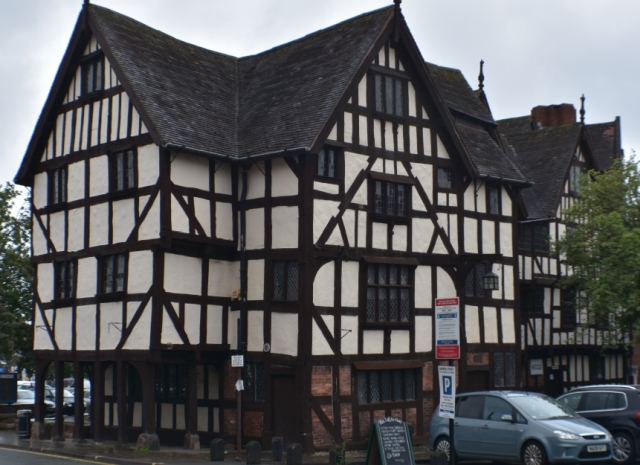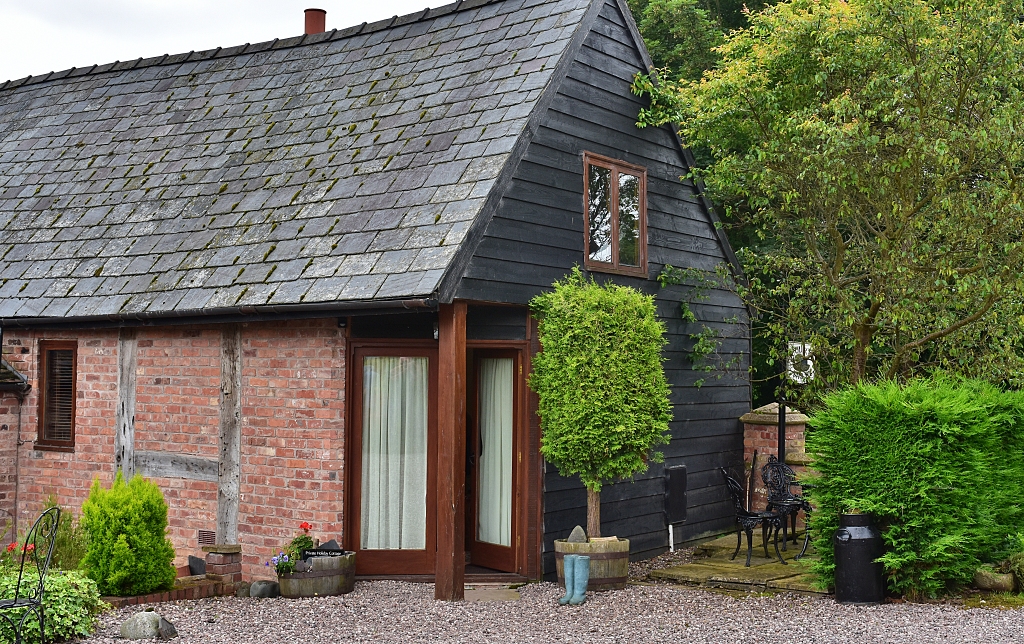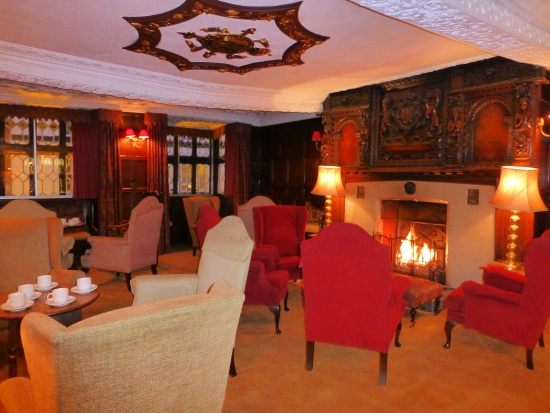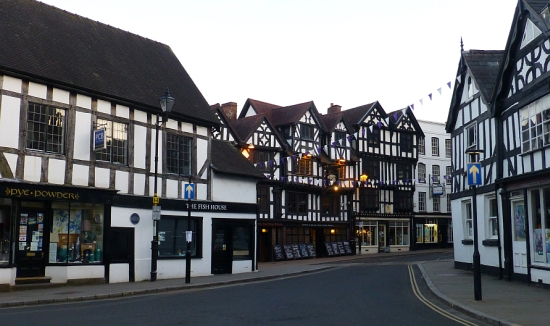Shropshire
A Land of Strife and Industry
Shropshire offers a raft of historical sites of all ages for visitors to explore, claims the food capital of England, has dramatic scenery for walking or cycling, and is one of the most rural and unpopulated parts of the country. This all sounds like Essentially England heaven!
It's a flat fertile land interrupted by a number
of outstandingly beautiful hilly ridges like Long Mynd, the Stretton
Hills, Stiperstones, the Wrekin, and Hawkstone. They cover about a quarter of the county and give lovely views across a much coveted part of England.
It's a county of two parts, split by Britain's longest river, the River Severn. It’s this river that created the Ironbridge Gorge, the birthplace of the Industrial Revolution. But Shropshire's history goes further back than that. Forming the border between England and Wales, this county has been a battleground for centuries as the many forts and castles dotting the landscape can attest.
There is
Shrewsbury,
the county town, where you can wander
around
medieval streets with names such as Grope Lane and Butchers Row, and
admire the old wooden buildings, some so wonky you wonder how they stay
standing. Ludlow
is regarded as the food capital of England and blessed with a large
number of high quality eating establishments and local food
producers. Food
is a big thing in and around Ludlow, as you can't fail to notice when you visit.
And, of course, there's Much Wenlock, the birthplace of the modern
Olympic
Games. In between you find ruined castles, Roman remains, abbeys and manor houses and some exceptionally fine bridges.
And all of that is Shropshire.
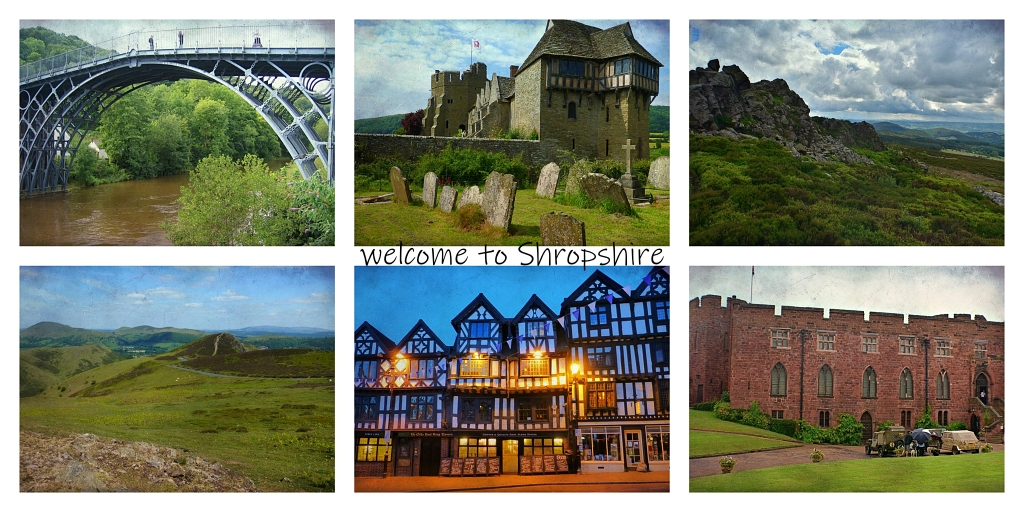 Images of Shropshire. All photos © essentially-england.com
Images of Shropshire. All photos © essentially-england.com
Travel Tips
Although tucked away on the western side of England, the county has good travel links. One of the oldest, the Roman Watling Street passed through the county on its way from Dover and into Wales. Now there is the M54 motorway, and airports at Manchester, Birmingham, and East Midlands and a number of main line train stations from which you can join a local network to travel within the county.
And just as there are copious places to visit in Shropshire, there are equally many wonderful places to stay. Shropshire has some fabulous hotels. There are guest houses and bed & breakfasts if you're on a short break or just on the way through. And there are holiday cottages in Shropshire for parties from a cosy two to a raucous family party.
Shropshire History
This is a county where a bit of almost every historical period has survived. From mammoths to Roman cities, from Norman castles to the wonders of the Industrial Revolution its all here, over 10,000 years of history to be explored and discovered.
Prehistoric Shropshire
The Shropshire Mammoth is one of the most significant English natural history discoveries. The skeletons of an adult and three baby mammoths were found in a gravel quarry just outside Shrewsbury. Some 10,000 years ago they got stuck in a tar pit and at the Shropshire Hills Discovery Centre in Cravens Arms you can find out about their life and death in Ice Age England
In the hills to the south west of Shrewsbury, and near the border between England and Wales, you can explore stone circles and burial cairnes and also a manufacuring site for prehistoric axes. The best of these, and probably the easiest to get to, is Mitchell's Fold Stone Circle.
Roman Shropshire
It wasn’t until AD47 that the Romans got this far west, almost four years after their successful invasion. Here they met and fought the local Cornovii tribe who lived around the Iron Age hill fort on the Wrekin. There is evidence of a number of Roman marching camp sites in the county, but the large city of Viroconium (Wroxeter) on the old Roman Watling Street is the main surviving Roman site in the county. This was the fourth largest walled Roman city after London, Cirencester and St. Albans, and at its peak was inhabited by almost 15,000 people. It is one of the most impressive Roman sites in England.
Now you can walk around the public baths, gymnasium, and streets as the Romans did many years ago.
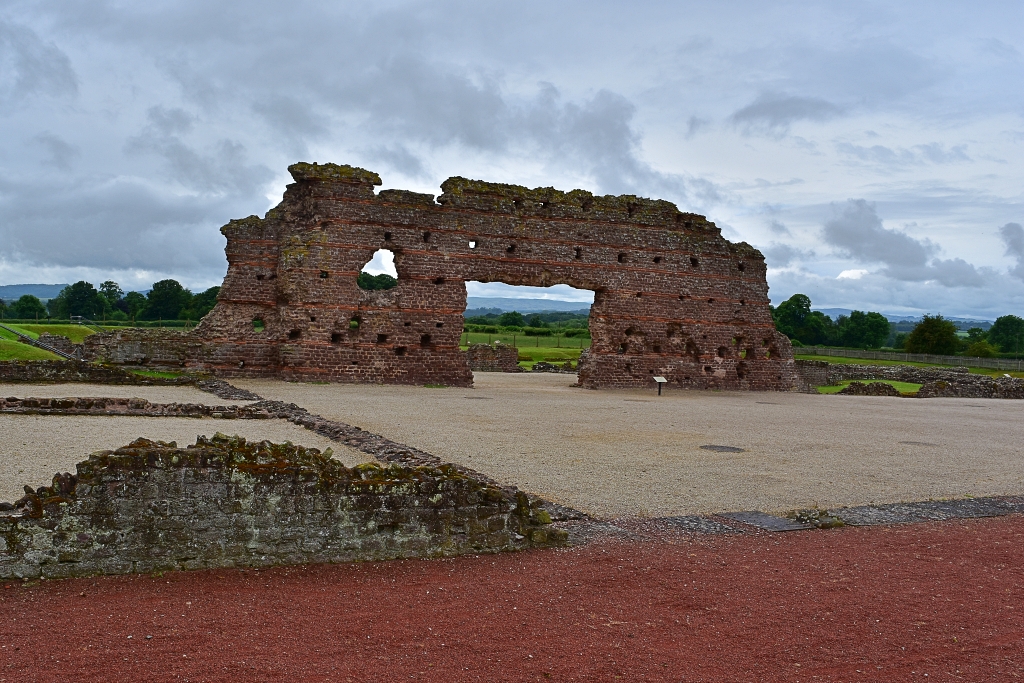 Wroxeter Roman City © essentially-england.com
Wroxeter Roman City © essentially-england.com
Anglo-Saxon Shropshire
After the Romans left English life became tribal again and England soon split into kingdoms. Little remains of this time as most buildings were wooden and only few written records were kept. This area, however, comes up trumps with one of the most significant and substantial Anglo Saxon monuments. Offa’s Dyke, running the length of the English-Welsh border, was created in the 8th century by King Offa of Mercia. There is an Offa’s Dyke visitors centre in Knighton and for the keen walkers an Offa’s Dyke long distance trail of 182 miles that travels along its length.
Shropshire as a county dates back to around 920, just after the reign of Alfred the Great. Named after, and centred around, Shrewsbury its aim was to increase the defence of English Mercia against the Vikings. Although the Vikings settled in here, nothing much remains to show they were there, perhaps only an odd Danish place name, Danesford.
For lovers of the legendary King Arthur, there are arguments that he was born in this area and there is a trail you can follow to see the “real” sites of the stories about the sword in the stone, the Holy Grail, Camelot, and Lady Guinevere.
Norman Shropshire
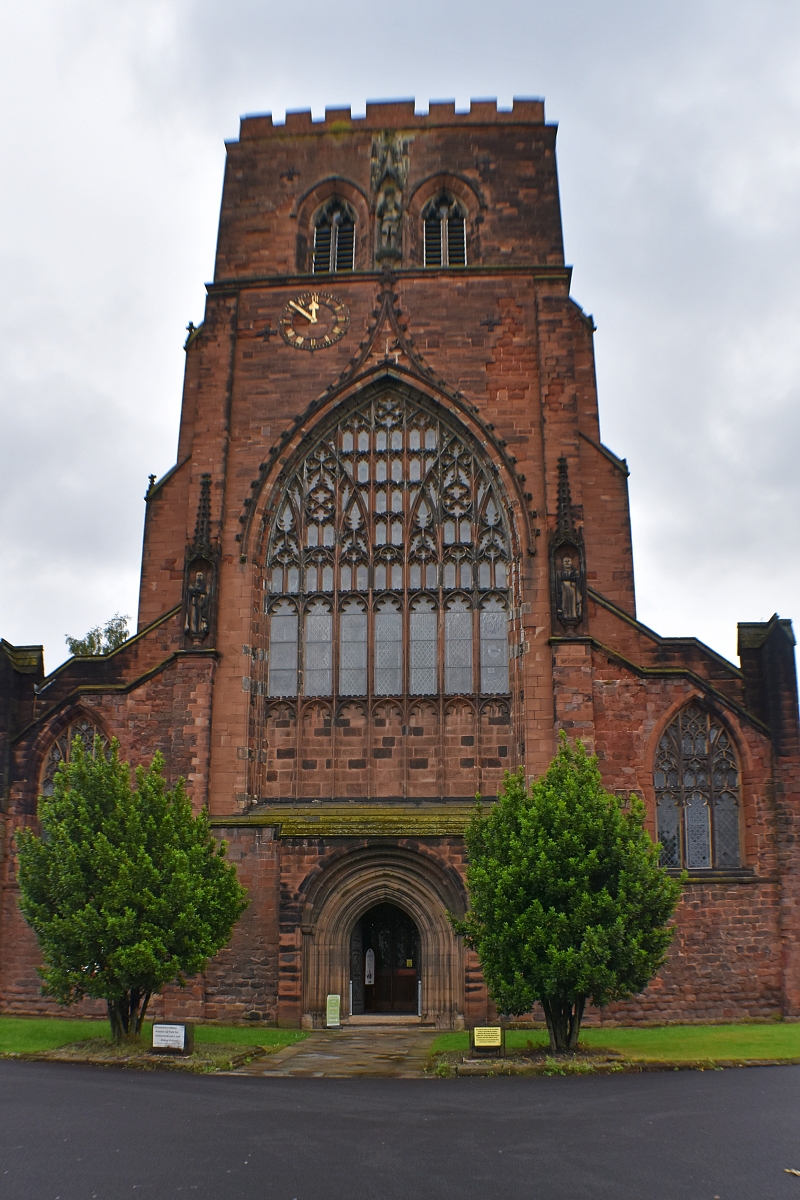 Shrewsbury Abbey © essentially-england.com
Shrewsbury Abbey © essentially-england.comShortly after the Norman Conquest in 1066, King William made Roger de Montgomerie Earl of Shrewsbury and requested that he control the locals' dislike of the new Norman rulers and to stop the Welsh from raiding.
The new Earl built his main castle in Shrewsbury and around another 70 castles througout the county, Clun and Ludlow amongst them, making it the most fortified shire in England.
But the building wasn’t all about castles and defence, as during the Norman period a number of religious centres were also constructed. Wenlock Priory, Buildwas Abbey, Haughmond Abbey, Lilleshall Abbey, and Shrewsbury Abbey can all still be visited today.
Medieval, Tudor and Stuart Shropshire
The Normans may have imposed order with a violent fist, but the centuries after were filled with strife.
This close to the border, there was always the chance of Welsh raids, so castles were built stronger and many manor houses were fortified, like Acton Burnell Castle, owned by King Edward I's chancellor Robert Burnell.
The Wars of the Roses, the dissolution of the monasteries and abbeys, and the English Civil War all left their marks on the county. Many of the buildings were ruined or damaged beyond repair during these times and this is how we find them today. Moreton Corbet Castle is one such ruin, the remains of the grand Elizabethan hall looking out over the surrounding countryside.
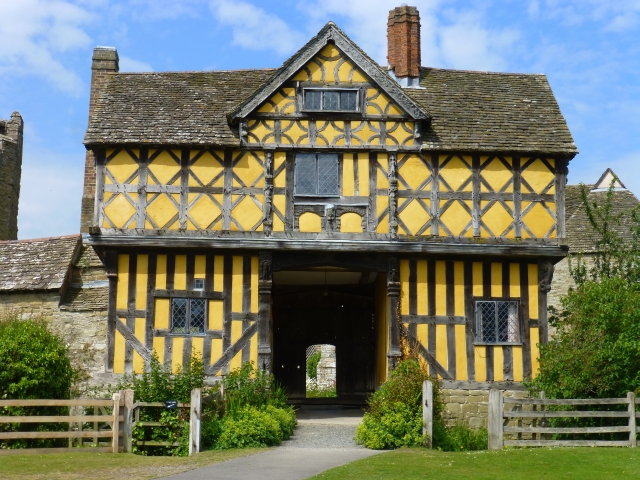 Stokesay Castle Gatehouse © essentially-england.com
Stokesay Castle Gatehouse © essentially-england.comFine and almost complete examples that remain today include Shrewsbury Abbey, which is still in use, Shrewsbury Castle which houses the Regimental Museum, and Stokesay Castle maintained by English Heritage.
Georgian Shropshire
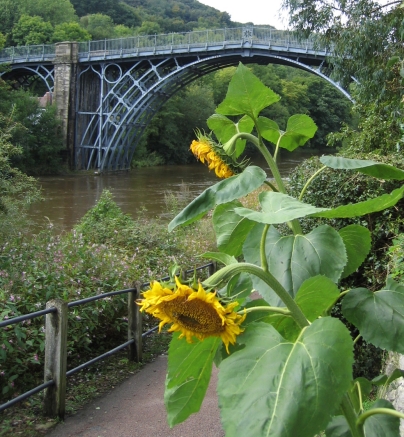 Iron Bridge © essentially-england.com
Iron Bridge © essentially-england.comThe Georgian period was a time of significant advancement in science and industry. In the Ironbridge Gorge area, Abraham
Darby revolutionised the process for casting iron, soon leading to the first
iron bridge, the first cast iron cylinders for steam engines, the first iron
rails for wagon transport, and also the first iron boat. Soon, when Thomas Telford was surveyor for Shropshire, iron bridges spread across the county. One of them, Cantlop Bridge, was on our to-visit list.
However, Ironbridge Gorge is not all
just about iron, as ceramics, pottery, and clay pipe making were all part of
the industrious activity in the area. Broseley, on the opposite side of the Ironbridge Gorge, was a centre of clay pipe making. Some of the old town's infrastructure - the Broseley Jitties - are still there to be explored. In fact, the whole area has a number of great museums that tell the story of
the rise and fall of this productive area, how people lived, their homes, and
there is a wonderful living history museum.
And in case you were wondering what the local well-to-do were spending their money on you could visit Attingham Park estate. This National Trust property tells a wonderful story of how the Hill family built and furnished an amazing house, bankrupted themselves in doing so, and the love and hate relationship further generations had with their ownership. It’s a really captivating story and the house and grounds are beautiful.
Modern Shropshire
The shire's reputation as a centre of industry and innovation continued throughout the Regency and the reign of Queen Victoria. Canals were built and railways traversed the county to transport materials and people, Snailbeach Mine became Europe's biggest producer of lead, and many of the local businesses contributed works to The Great Exhibition of the Works of Industry of all Nations, held in the newly built Crystal Palace in London's Hyde Park in 1851.
When the Industrial Revolution ran out of steam, so did Shropshire, which turned into the county we know now. It’s no longer a place where skies glow red from working furnaces. It's not a place shrouded in smoke and covered in dust. Instead, it's a vibrant green where the main activities are farming and agriculture, a place to stop for a delicious leisured lunch or an equally declicous tea. It's a county full of ruins and half-forgotten treasures to explore.
Ruins and treasures that remind us that Shropshire is truly a land of strife and industry.
Shropshire on Essentially England
Our Ideas for Fabulous Days Out
- Shrewsbury - Shropshire's county town and home of Benedictine sleuth Brother Cadfael
- Shrewsbury Abbey - ruined after the Dissolution, the once Benedictine abbey is now a parish church
- Ludlow - foodie paradise, with a castle and deeping welcoming vibe, Ludlow is a wonderful place to spend a long weekend
- Clun - a gorgeous little market town with exceptional walking in the shadow of a ruined Marcher stronghold
- Clun Castle - ruined Norman castle owned by the Earl of Arundel and cared for by English Heritage
- Much Wenlock - mecca for geologists, fossil hunters and keen walkers and home of the Olympics
- Wenlock Olympian Games - instigated in 1850 and held in Much Wenlock to this day, this is the story of Dr. William Penny Brookes and his Olympian dream
- Wenlock Priory - a religious site since 680AD, suppressed during the Dissolution, and now an exceptionally peaceful ruin
- Haughmond Abbey - until the Dissolution, the home of a community of Augustinian canons, the abbey buildings are set right into the hillside.
- Lilleshall Abbey - a fascinating site telling a story of something wonderful coming to grief through sheer greed.
- Acton Burnell Castle - a romantic ruin that belonged to a medieval English chancellor, welcomed a king and served as a place where parliament was held.
- Moreton Corbet Castle - a site that moved from medieval castle to grand Elizabethan pile to romantic ruin.
- Ironbridge Gorge - this is a UNESCO World Heritage Site for a reason. The gorge is full of history, amazing sights, museums and people who love what they do!
- The Iron Bridge - the symbol of Britain's Industrial Revolution and properly impressive!
- Blists Hill Victorian Town - a wonderful place for a day out! This living museum on an old industrial site, full of reconstructed and restored buildings, industrial artifacts, craftsmen, artisans and reenactors recreates life in 1900.
- Darby Houses - a must-see for lovers of old-style domestic life. The Darby houses were the home of the Darby family for five generations and have been widely restored to look like they did in the 1850s.
- Cantlop Bridge - a Thomas Telford special. One of the few of his iron bridges that's still in place where it was first erected.
- Broseley Jitties - a warren of tiny lanes and houses from the time when you needed nothing more than build a hearth and chimney in one day to claim the right to settle in the town.
- Coalport China - porcelain flowers, animal bones and the beginnings of mass production
- Coalbrookdale Museum of Iron - or how the Industrial Revolution got started.
- Jackfield Tile Museum - the Victorians had a thing for tiles. Now you can find out why.
- Tar Tunnel - an intriguing, somewhat eerie site and the means to move boats uphill
- Snailbeach Mine - once Europe's largest producer of lead. Now a wonderful place to explore industrial history and hunt minerals.
- Mitchell's Fold Stone Circle - an ancient stone circle and ceremonial site
- Offa's Dyke - King Offa of Mercia's great earthwork still marks the boundary between England and Wales and dissects the town of Knighton
- Attingham Hall and Parkland - a rather splendid grand house with deer park on the outskirts of Shrewsbury.
- Stokesay Castle - a stunning 13th century fortified manor house with many original features.
- Buildwas Abbey - a peaceful Abbey ruin near the bank of the River Severn.
- Ludlow Castle - a Norman castle with a long and varied history.
- Langley Chapel - a quite Tudor chapel in which to reflect.
- Wroxeter Roman City - wander around one of the best Roman sites in England.
- Stiperstones and The Bog Mine - enjoy a fine walk up on to the Stiperstone ridge.
- Boscobel House, the Royal Oak, and White Ladies Priory - learn about a future Kings hiding places as he tries to find safety.
- Bridgnorth - an historic market town divided in two, High and Low, by the River Severn.
- King Arthur driving tour - who was King Arthur and did he live in Shropshire? Try our driving tour and explore the beautiful Shropshire countryside. You never know you may start to believe that King Arthur lived in Shropshire!
For more great ideas on things to do in Shropshire click here.


